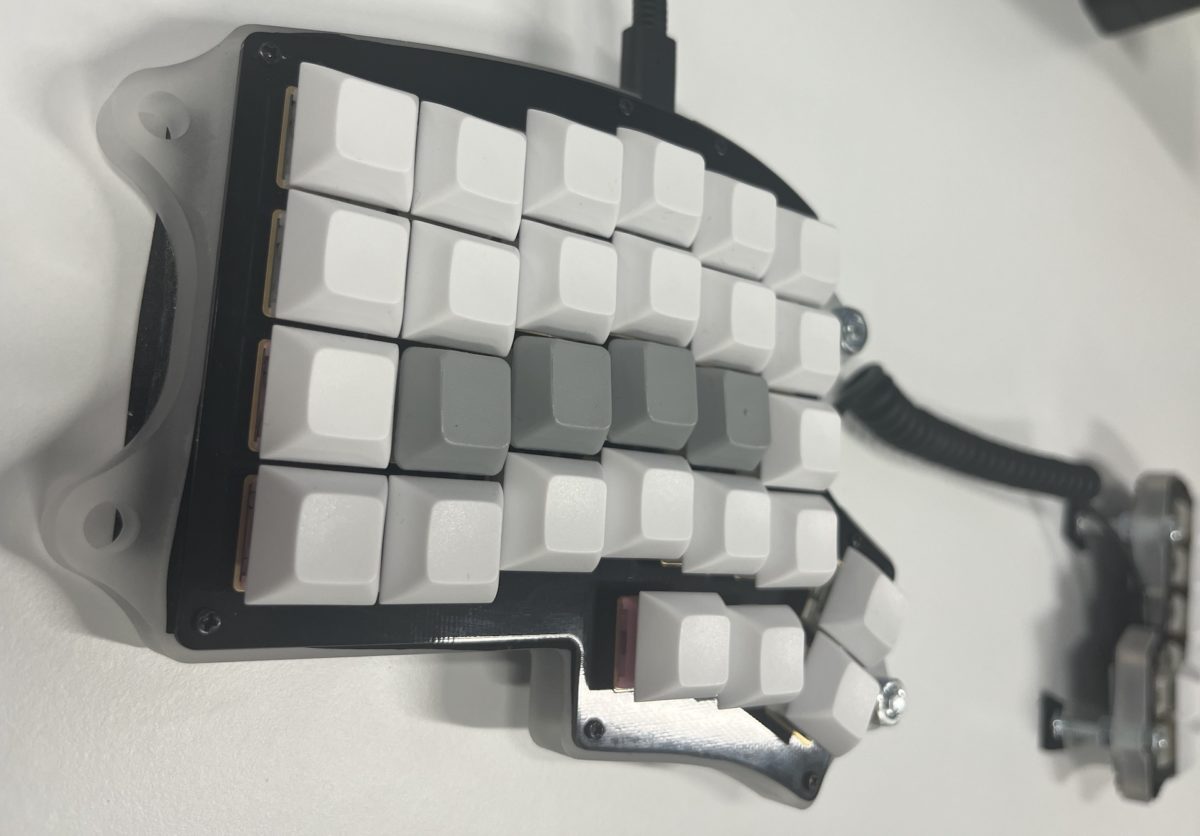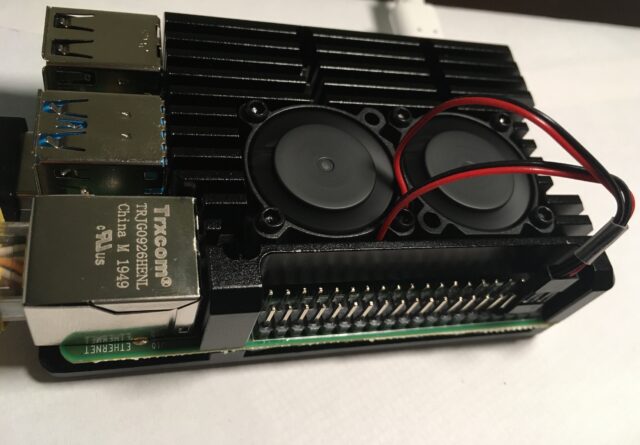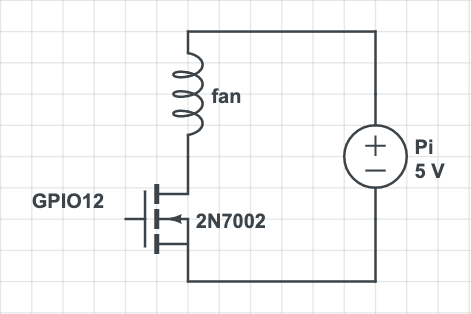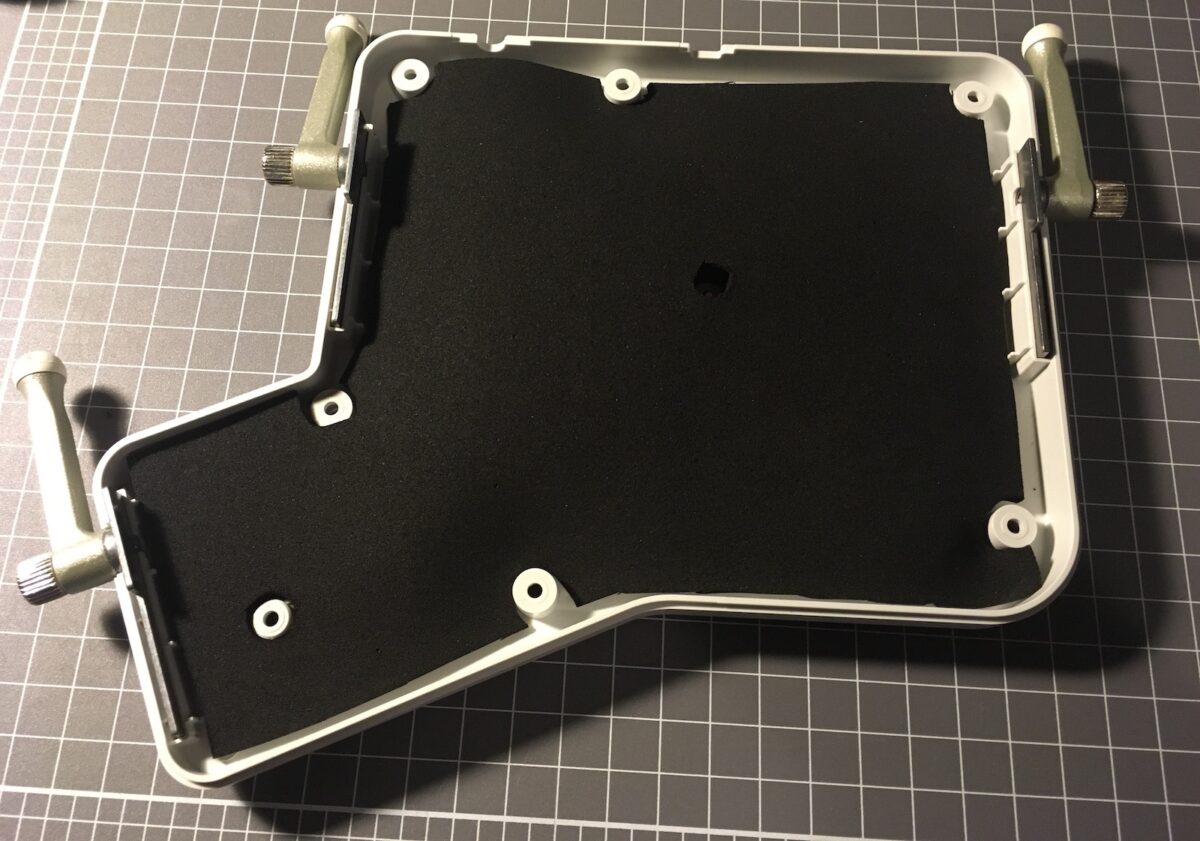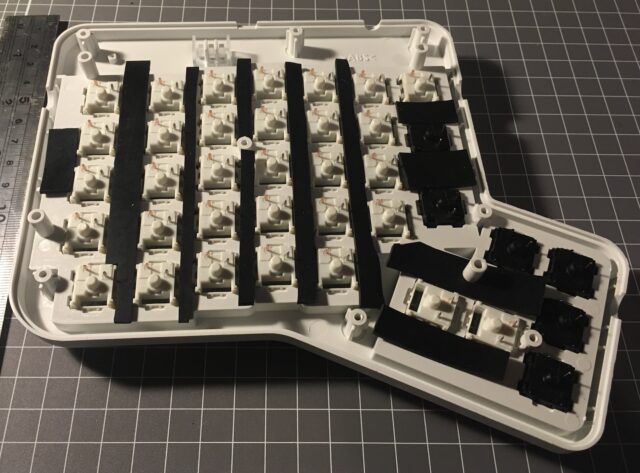I have been using an Iris rev 6b split keyboard (FR4 plates, acrylic tented middle layer) for a couple of months.
Until I got the Iris, I’d been packing my Ergodox to work each day, which was inconvenient, and the constant plugging/unplugging was probably not great for the mini USB port either. I wanted:
- portability, so I can take it on a commute or travel
- fewer keys (maybe more ergonomic if I learn to use them efficiently?)
- quietness, so as not to disturb co-workers
- a split ortholinear layout similar to my Ergodox, so I can rely on muscle-memory between both boards
- tenting
- some assembly (to participate in a group custom keeb-building activity)
- not egregiously expensive
Overall, the Iris did meet my goals, though it required some experimenting/modifications to the hardware and firmware to do so. This review discusses these aspects, mostly in comparison to my Ergodox and similar split/ortho keyboards. It doesn’t discuss the advantages of splits, ortholinear, or <60% layouts.
The Iris keyboard kit cost about $165 USD, including shipping to Australia. Switches and keycaps were another $70 or so (you only need 56 1Us), and maybe $5 USD for the carriage bolts, for a total of $240. This is much cheaper than high-end prebuilt tented ergos: a Dygma Defy is $399, a Moonlander is $365, and an Ergodox EZ Glow is $324 USD.
